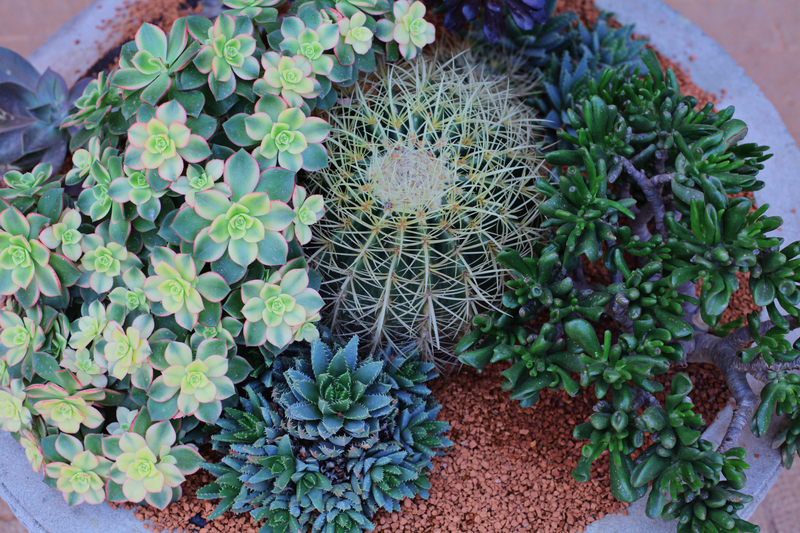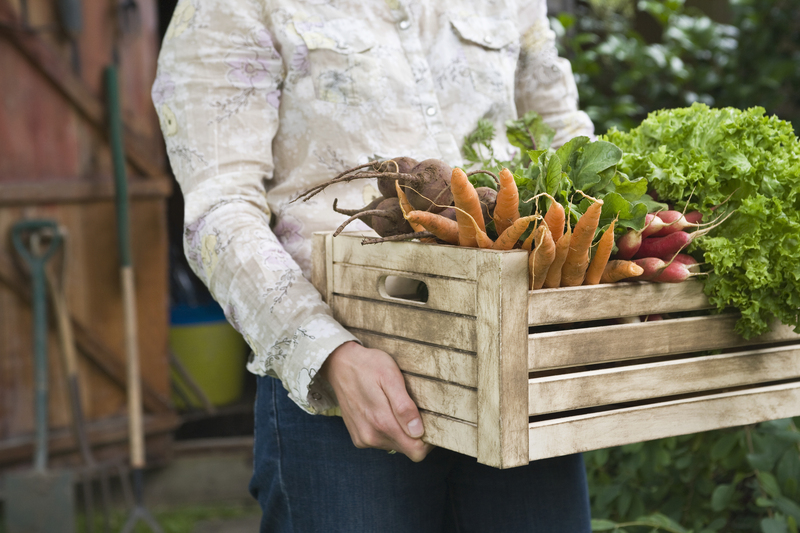Maintain a Weed-Free Zone with These 3 Essential Tips
Posted on 11/06/2025
Maintain a Weed-Free Zone with These 3 Essential Tips
Every gardener or homeowner dreams of an immaculate oasis, bursting with lush plants and vibrant blooms--not stubborn, unsightly weeds. Unchecked weeds can steal nutrients, sunlight, and even water away from desirable plants. Whether you are a green-thumb expert or a weekend yard warrior, discovering how to maintain a weed-free zone is essential for beautiful, healthy landscapes. Below, we'll delve into the top three essential tips for achieving and sustaining a garden and lawn free of weeds, equipped with actionable advice and proven strategies.
Why a Weed-Free Garden Matters
It's not just about aesthetics--though a tidy, weed-free yard certainly looks more inviting. Weeds can:
- Compete with your plants for much-needed nutrients and water
- Crowd out garden crops, flowers, and turfgrass
- Harbor pests and diseases
- Increase garden maintenance efforts and costs
If you want healthy, flourishing plants and a cleaner landscape, establishing weed control is key.

Tip 1: Start with Smart Prevention Methods
Mulching - Nature's Best Weed Barrier
One of the most effective ways to keep your garden weed-free is strategic mulching. Applying a layer of organic material like wood chips, bark, leaves, or even grass clippings around plants creates a barrier that suppresses weed seed germination.
- Prevents sunlight from reaching the soil, which is crucial for weed seed growth
- Makes pulling any stray weeds easier due to softer soil
- Helps retain soil moisture and regulate temperature
Tip: Maintain mulch layers 2 to 4 inches deep, but keep it away from direct stem contact to avoid rot.
Landscape Fabric - A Synthetic Solution
Weed control fabrics, or landscape cloth, serve as another effective weed barrier. Installed beneath decorative mulch or gravel, it blocks weeds while still allowing water and air to reach plant roots. Anchoring the fabric securely and cutting holes for your plantings gives your landscape an extra line of defense against encroaching weeds.
Proper Spacing and Dense Planting
Thick, healthy plantings naturally out-compete weeds by shading soil and leaving less room for intruders to take hold. Refer to specific plant spacing recommendations, or experiment with layering plants of varying heights and growth patterns for maximum weed suppression.
Tip 2: Regular and Strategic Weed Removal
Hand Pulling: Best for Small Infestations
This tried-and-true method is especially effective for young weeds. The trick? Pull weeds when the soil is moist--such as after rain or irrigation--for easier root removal. Always aim to extract the entire root system, especially with perennial weeds and deep-rooted invaders like dandelions and thistle.
- Use a hand trowel, weeding fork, or special weed-pulling tools for deep-rooted weeds
- Dispose of pulled weeds properly, especially if seeds are present
Hoeing and Cultivating Large Areas
In vegetable gardens and open beds, a sharp hoe or cultivator makes quick work of surface weeds. The key is shallow cultivation: slicing weeds just below the soil's surface, before they have a chance to flower and seed. Be careful not to disturb your crop roots in the process!
Spot-Treat with Organic Herbicides When Needed
When weeds get out of hand, or in hard-to-reach areas, spot-treating with a targeted organic herbicide can help. Look for products containing ingredients like acetic acid (vinegar), clove oil, or citric acid for natural weed management. Always follow safety and application instructions.
Tip 3: Healthy Lawn and Garden Care to Outcompete Weeds
Feed and Water Your Lawn and Garden Properly
A thick, healthy lawn or robust garden leaves less room for weeds to invade. Regular feeding with the proper fertilizer and attentive watering routines boost plant vigor--making them more resilient against weed takeover.
- Mow grass at the right height: Taller grass shades the soil, preventing weed seeds from sprouting
- Water deeply, but less frequently, to encourage deep root growth
- Feed plants according to their needs and local soil test recommendations
Overseed and Repair Bare Patches
Thin and bare spots in your lawn or garden are open invitations for weeds to gain a foothold. Each fall or spring, overseed existing grass and fill in empty garden spaces with new plantings.
- Tip: Use high-quality grass seed designed for your climate and sun exposure patterns.
- Soil preparation before sowing improves seed-to-soil contact and germination rates.
Monitor and Respond Promptly
The earlier you spot a weed, the easier it will be to remove before it spreads or sets seed. Make garden scouting a regular habit, especially during high-growth seasons in spring and summer.
Bonus Tips for Sustainable Weed Prevention
- Rotate Crops: If you have a vegetable garden, switching crop locations each year reduces weed buildup and confuses pests.
- Solarization: For large, weed-infested areas, lay clear plastic sheeting over moistened soil in hot weather for several weeks. The heat kills weed seeds and soil-borne pathogens.
- Use Cover Crops: Planting quick-growing cover crops, or "green manure," chokes out weeds and improves soil health between growing seasons.
- Edge and Border Management: Keep garden bed edges clearly defined and edged, as grass and creeping weeds often invade from perimeters.
Common Types of Weeds and How to Identify Them
Knowing your enemy is half the battle! Here are a few of the most common garden and lawn weeds:
- Dandelion: Bright yellow flowers, fluffy seed heads; deep taproot makes it tricky
- Crabgrass: Low-growing annual grass with spreading, finger-like seed heads
- Bindweed: Twining vine with white trumpet flowers, spreads aggressively
- Chickweed: Low-growing with small, white, star-shaped flowers; lush in cool, moist conditions
- Thistle: Spiny leaves and purple flowers; persistent perennial root system
Proper identification ensures you choose the best removal and control method for each weed variety.

Frequently Asked Questions about Maintaining a Weed-Free Garden
1. Are chemical herbicides necessary to maintain a weed-free landscape?
No, organic methods like mulching, hand-pulling, and dense planting are often effective for typical gardens. Use chemical herbicides only as a last resort, choose low-toxicity options, and follow all safety guidelines.
2. How often should I check my garden for new weeds?
It's best to walk through your garden or yard at least once a week during the growing season. Regular, quick check-ins will help you stay ahead and maintain a weed-free environment more easily.
3. What are some earth-friendly mulching materials?
- Shredded bark or hardwood chips
- Composted leaves
- Straw (make sure it's weed-free)
- Pine needles (great for acid-loving plants)
- Grass clippings (applied in thin layers)
Conclusion: Enjoy a Beautiful, Weed-Free Space!
Creating and keeping a weed-free zone in your lawn or garden is both an art and a science. By combining thoughtful prevention, timely removal by hand or tool, and supporting your chosen plants, you build a natural advantage over weedy intruders. Remember:
- Start with a strong foundation--mulch, dense planting, and weed barriers
- Tackle weeds early and often, before they spread
- Nourish your landscape to favor healthy plants over weeds
By implementing these three essential weed prevention tips and maintaining vigilance, you can reclaim your garden's beauty and enjoy a serene, thriving outdoor escape--free from the headaches of persistent weeds.
Ready to reclaim your landscape and maintain a weed-free garden? Start today, and watch your efforts blossom into a sustainable, beautiful, and manageable space you can enjoy year-round!

